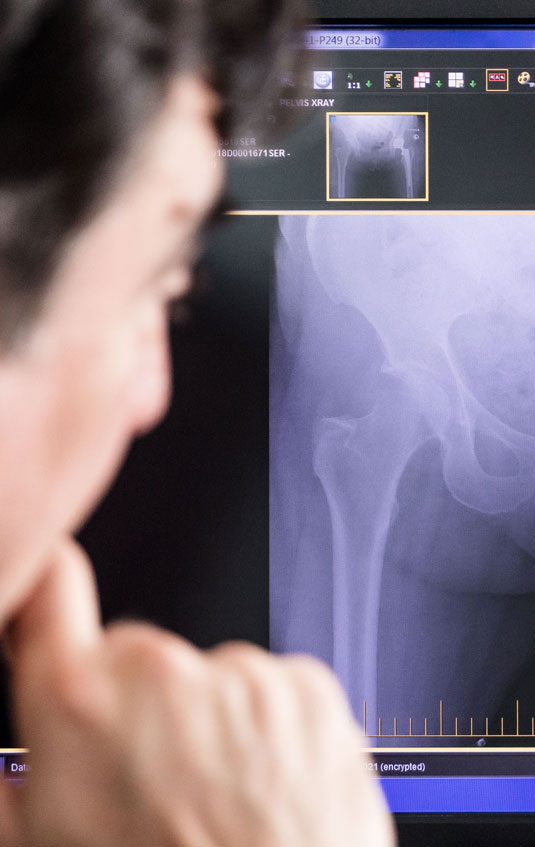
Direct anterior hip replacement surgery is not a new procedure having been initially introduced into Europe in the 1950s with the advent of modern day joint replacement surgery. Over the last ten years there has been renewed interest in this technique particularly in countries such as Australia, the United Kingdom and the United States.
Hip arthritis symptoms are initially best managed by conservative measures such as weight reduction, regular exercise, simple oral analgesics and intermittent use of anti-inflammatory medications. Activity modification and the use of walking aids can also help as the symptoms of pain and stiffness, and occasionally the sense of joint instability, begin to significantly encroach on mobility and quality of life. Topical heat can help soothe night-time discomfort. Steroid injection into the joint provides short term relief, and the use of stem cell injections remains expensive and unproven.
When the patient and surgeon have decided that surgery is a reasonable next step, an anterior approach total hip replacement in many cases can be advocated. This approach has the advantage of potentially less pain and faster return of mobility in the post-operative period, and studies have shown that this is generally the case compared to standard approach total hip replacement. This allows the patient to mobilise full-weight bearing on the operated limb the same day of surgery, with minimal need for post-operative physiotherapy, allowing a shorter stay in hospital. This is all possible because the technique involves a smaller incision, exposing the hip joint between muscle bellies without releasing tendons.
Recently Dr Cossetto has presented results of direct anterior approach total hip replacement surgery at the Australian Orthopaedic Association’s Annual Scientific Meeting in Canberra. These showed that the procedure is indeed safe, with early survivorship of implants similar to the more conventional approaches at 4 years. The direct anterior approach also had a significantly lower rate of revision for deep joint infection and dislocation . Potential benefits also include better control over leg length discrepancy following the hip procedure.